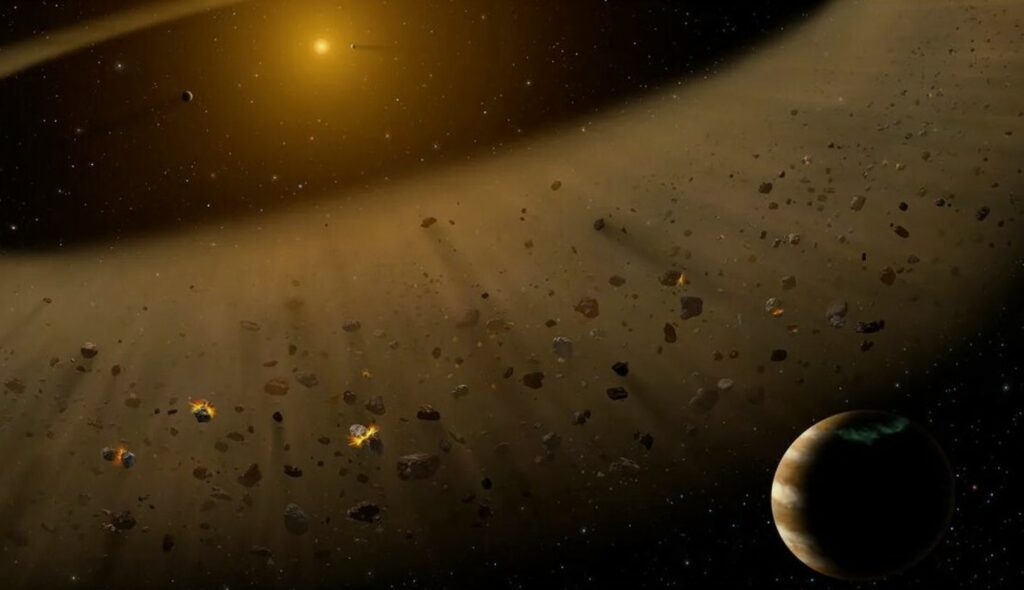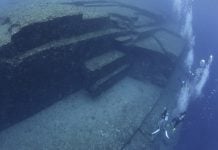
NASA’s New Horizons mission, which encountered Pluto in 2015 is now riding through the deepest depths of the Kuiper Belt, is encountering a cosmic dust storm that hints there may be more going on in the outermost reaches of the solar system than we imagine.
Space is filled with dust formed of tiny particles just microns — millionths of a meter — in size. Much of the dust in our solar system is leftover residue from the formation of the planets, which was a violent affair that saw a multitude of objects smash into one another. Today, this ancient dust is also joined by fresh dust sputtered off the surfaces of asteroids and comets by micrometeorite impacts. This dust content, both fresh and ancient, gives rise to the enigmatic “Zodiacal light.” The dust extends into the farthest reaches of the solar system. Astronomers still are not entirely sure of the make-up of this final frontier.
PROTECT YOUR HOME AND CAR WITH THE BEST LIGHTNING AND EMP PROTECTION AVAILABLE…
The Kuiper Belt (or the Kuiper-Edgeworth Belt, named after astronomers Gerard Kuiper and Kenneth Edgeworth, who independently proposed its existence) is so far away, and its icy inhabitants are so small and faint, that it wasn’t until 1992 that the first Kuiper Belt Object (KBO) beyond Pluto was discovered. That discovery was made by University of Hawaii astronomers Dave Jewitt and Jane Luu. But since then, thousands of KBOs have been spotted, and astronomers have tentatively been able to begin mapping the outer solar system.
Beyond the Kuiper Belt is the Scattered Disk, populated by KBOs that have been scattered from the Kuiper Belt by gravitational tides coming from the solar system’s outermost planet, Neptune. Objects in the Scattered Disk tend to have highly elliptical orbits that are steeply inclined to the plane of the solar system and can go out to hundreds of AU’s from the sun. One AU, or astronomical unit, is equal to the distance between Earth and the sun.
Far beyond the Kuiper Belt and the Scattered Disk is the Oort Cloud, a vast spherical region of frozen objects extending over a light-year from the sun. While its distance means that the Oort Cloud has never been directly observed, scientists know it exists because the orbits of long-period comets can be traced back to there.
Now, however, new findings from New Horizons threaten to upend much of what we thought we knew about the outer solar system to begin with.
“New Horizons is making the first direct measurements of interplanetary dust far beyond Neptune and Pluto, so every observation could lead to a discovery,” astronomer Alex Doner of the University of Colorado, Boulder said in a statement.
The distance between the outer edge of the Kuiper Belt and the sun was thought to be about 50 astronomical units (one AU is also equal to 149.5 million kilometers, or 93 million miles.) On Jan. 1, 2019, New Horizons encountered the KBO named Arrokoth, which sits at a distance of 44.5 AU from the sun; today, New Horizons is at a distance of 58.25 AU from the Sun, having passed the 50 AU mark in April of 2021. Over the past five years, New Horizons should have sailed over the edge of the Kuiper Belt. With KBOs separated by millions of miles, however, New Horizons wouldn’t visually notice that it had left them behind. Instead the sign would be a drop-off in levels of interplanetary dust.
Yet, the spacecraft’s Venetia Burney Student Dust Counter (SDC), named after the little girl who named Pluto in 1930, has not observed this drop-off. In fact, there’s as much dust as ever out there, bewildering astronomers.
The SDC is mounted on the leading face of the New Horizons spacecraft. It consists of 14 plastic film detectors, each 14.2 by 6.5 centimeters (5.6 by 2.6 inches) in size and just 28 microns thick. A dozen of the detectors are exposed to space, while the other two are shielded so that they can act as reference detectors, recording any events not related to dust impacts to help rule out false positives. Whenever a dust particle strikes one of the detectors, the impact leaves a little pit in the plastic film that subtly alters the way their surfaces conduct electricity.
One possibility is that the excess dust was actually produced closer to the sun and was blown out of the Kuiper Belt thanks to the pressure of sunlight acting on the particles. However, Doner’s team has deemed this theory unlikely. Instead, a more enticing possibility is favored, they say.
There may simply be more to the Kuiper Belt than astronomers had realized.
The continued presence of dust implies New Horizons is still within the Kuiper Belt, and that the Kuiper Belt is far more extensive than anyone knew, stretching across billions of miles farther from the sun than our maps presently estimate.
It’s not just the dust counts telling us this. Astronomers have been using machine learning algorithms to search observations made by the 8.2-meter Subaru Telescope on Mauna Kea in Hawaii, and the Victor M. Blanco Four-Meter Telescope at the Cerro Tololo Inter-American Observatory in Chile to hunt for more icy objects out there that New Horizons could investigate. They’ve so far found 154 objects in the direction that New Horizons is headed, including about 20 that the spacecraft will come within a few million miles of, close enough for some rudimentary observations. Yet some of those 154 objects appear to be located beyond the Kuiper Belt, and not on the kind of eccentric orbit suggestive of the Scattered Disk, but in the ecliptic plane that’s also shared by the Kuiper Belt.
Are they members of a wider Kuiper Belt, or perhaps even a second belt?
PROTECT YOUR HOME AND CAR WITH THE BEST LIGHTNING AND EMP PROTECTION AVAILABLE…
“The idea that we might have detected an extended Kuiper Belt — with a whole new population of objects colliding and producing more dust — offers another clue in solving the mysteries of the solar system’s most distant regions,” said Doner.
New Horizons is sailing through uncharted waters. Only four spacecraft have passed this way before — Pioneer 10 and 11, and Voyager 1 and Voyager 2; none were equipped with a dust counter like New Horizons.
While the Pioneers are long since inactive and with the Voyager 1 spacecraft beginning to falter, New Horizons has enough fuel and power to survive well into the 2040s, when it could be well beyond 100 AU from the Sun. By the time its power dwindles, it will likely have completely redrawn the map of the outer solar system. [AJL]
Hey friends, it’s time to wake up!
If a few more people choose to support my work, I could expose more lies, root out more corruption, and call out more hypocrites. So, if you can afford it, please support my endeavor by either using PAYPAL or the DonorBox below (PAYPAL & Credit Cards / Debit Cards accepted)…
If you are a crypto fanatic, I do now accept crypto donations:
BTC: 1AjhUJM6cy8yr2UrT67iGYWLQNmhr3cHef (Network: Bitcoin) USDT: 0x490fe5d79d044a11c66c013e5b71305af0a76c1b (Network: Etherum ERC20)
You should join my newsletter to get a daily compilation of different breaking news, pictures and videos… YOU WILL LOVE IT!
Thank you,
Manuel













The gyroscope like apparatus would need to be held in place by what amounts to a giant caliper.The gyroscope could power the caliper to create the energy necessary for the caliper to remain stationary holding the gyroscope like apparatus in place
Do we currently have the materials and means ?No Could we at some point ?Yes.
This would be the place I’d look for planet x
Note the kuiper belt could be farmed so to speak.To create planets more specifically.It would require a anchor of sorts and be shaped like alike a gyroscope
spinning top.If you could anchor it it would collect dust materials and could be eventually teraformed.
The BS si fi action page. Fantasy world of NASA.